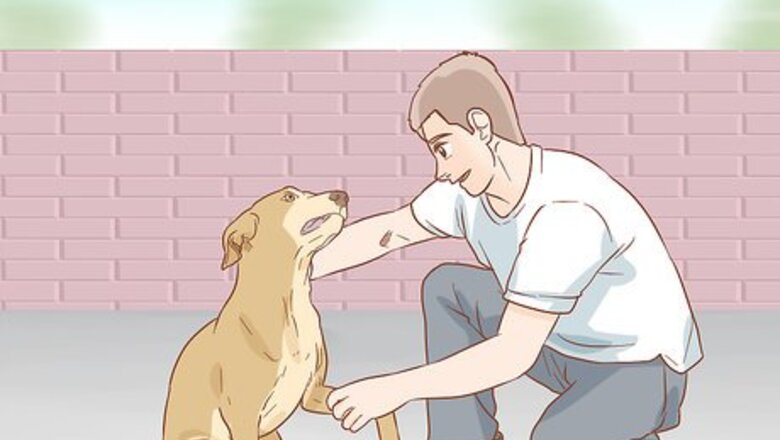
views
Performing First Aid
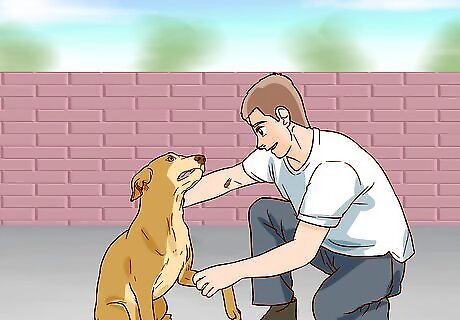
Evaluate the dog for more severe injuries. If your dog has just experienced a traumatic event, take a moment to assess your dog. If your dog has more serious injuries, then you will need to address these first before dealing with the broken leg. If the injury occurred on a road, move the dog to a safe place and then administer emergency first aid. Some things to look for include: Whether or not your dog is alert. If your dog is unconscious, then he may have a head injury. Whether or not your dog can take full breaths. The color of their gums. They should be pink. If they are very pale, muddy, or blueish in color, then your dog is not getting enough oxygen and needs immediate veterinary attention. Strong, synchronous pulses. Feel for the heart beating on the lower chest, near the elbow joint. The femoral pulse is also easy to feel on the inside surface of the thigh, in the middle of the leg. If you cannot find a strong regular pulse, then seek immediate veterinary attention for your dog.

Examine the injured leg. If you see your dog limping, take a look to see which leg is injured. Do a slow, careful examination of the injured leg. The broken leg could be really obvious, such as an exposed, open fracture. In this case, you’ll need to keep the wound clean. If it is a closed fracture, your dog may be limping but there may not be any blood or obvious wound. Whatever type of break, you’ll need to apply first aid and get your dog to the veterinary hospital right away! Apply pressure if you notice that the limb is bleeding. Since injured dogs can be fearful and aggressive, you’ll need to be careful. Signs of aggression include growling, snapping, snarling, and rigidness. To avoid getting bitten, don’t put your hands or face close to the injured dog, especially if it is already agitated. To help keep your dog calm, place a light towel or cloth over their head. This will help to limit light and sound, which may help to keep your dog calm. If you need to move the dog away from the place where the accident occurred, you can use a towel sling to support some of their weight.
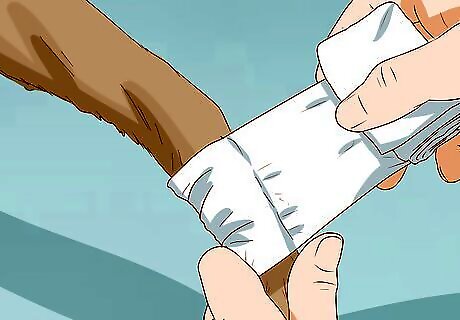
Bandage and secure any wounds with first aid tape. Wrap a clean bandage around each of the wounds several times until they're completely covered. You want to wrap the wounds so the bandages are snug but not applying too much pressure. Secure the bandage with first aid tape. If you don’t have a clean bandage or gauze, you could use a clean towel. You should be able to fit 2 fingers under the bandage. If you can't, the bandage is too tight and you should rewrap it so it's looser.
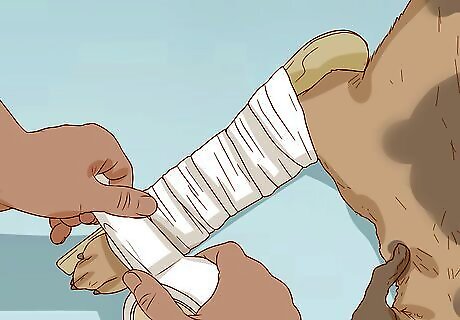
Put a leg-splint on your dog. You should prevent the fracture from getting any worse by applying a simple leg-splint. Use a medical splint or, if you don’t have one, a ruler or a spatula will do the trick! The splint should cover the entire area of the fracture and should extend past the joints above and below the fracture. It may go all the way up to where the leg meets the abdomen. Tie the splint to the leg with a bandage and secure it with medical tape at the top and the bottom.
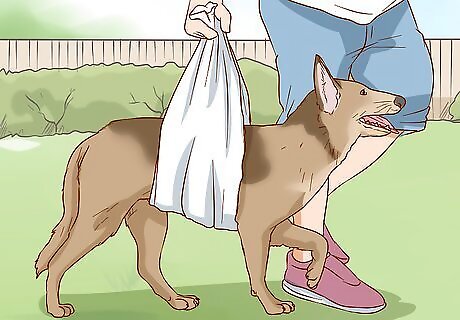
Use a towel as a sling to move your dog to the carrier. Your dog will have a hard time walking to the carrier or the car, so you should assist them. Wrap a towel or a blanket around their abdomen. Hold some of their weight with the towel while they walk to the carrier or the car. An easy way to do this is to pass a large bath towel under your dog’s belly. Hold the end up over his back, like a sling, to support his weight.
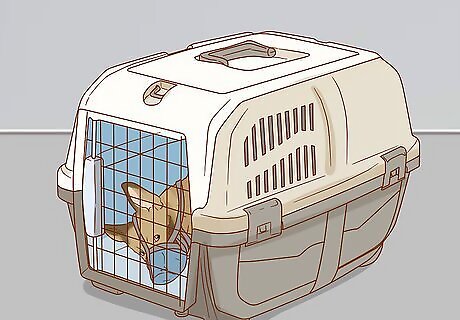
Restrain your dog in a carrier. Because your dog could move around on the journey to the veterinary hospital, you should restrain them. Lay them down with their injured leg up in the carrier. Use the carrier to transport them to the hospital by car or taxi. Since injured dogs can become aggressive, you may want to put a muzzle on your dog before taking them to the veterinarian. However, make sure to remove the muzzle if you feel like it is restricting your dog’s breathing. If you don't have a muzzle on you, you can make one by wrapping gauze or a piece of fabric around your dog's snout and tying a knot so it's snug.
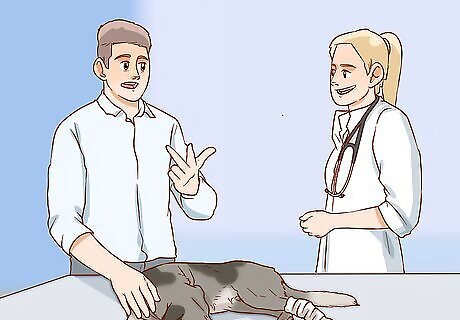
Get your dog to the veterinary hospital. You’ll need to get your dog to the veterinary hospital as soon as possible. Drive them or, if you don’t have a car, get a taxi. On the way, try to keep your dog warm and comfortable by loosely wrapping them in a towel or blanket. If your dog was involved in a vehicular accident, it is especially important to get them to the hospital quickly because they could have internal injuries in addition to the broken leg. You could ask a friend to comfort your dog in the back seat while you drive. You’ll need professional veterinary treatment. So don’t use ointments on the open fracture, or perform other self-treatments on the dog. Don’t try to re-set the bone yourself.
Getting Veterinary Care
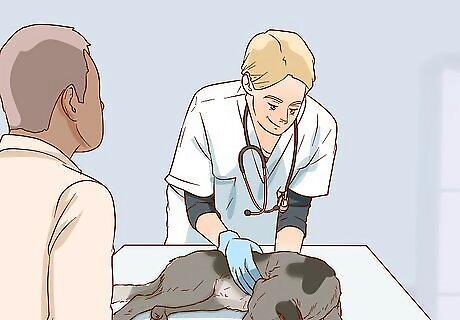
Get professional veterinary care. When you get to the hospital, the veterinary team will take appropriate emergency action. Depending on the severity of the injury, your veterinarian may focus on stabilizing vital organs. Once vital signs look stable, your veterinarian will attend to the fractured leg.
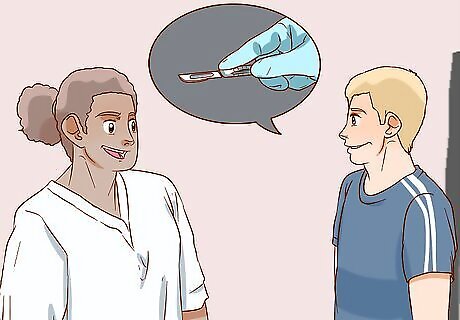
Ask your veterinarian about treatment options. Your veterinarian will diagnose the type of broken leg. They will tell you what type of fracture it is, such as a complete or an incomplete fracture, transverse (straight) or oblique (diagonal) break. And they should be able to tell you some of the treatment options, which may be surgical or non-surgical. If it is a closed fracture, they may put your dog’s leg in a cast or a splint. Your vet may perform surgery to insert pins, plates, or screws into the bone to help the broken leg heal.

Find out whether amputation is necessary. If your dog’s leg is severely broken in multiple places, your veterinarian may suggest amputation. Although this treatment option may sound scary, it could be the most viable option if the injury is very severe. Remember that your dog has four legs and, if necessary, should be able to live a healthy life with three legs. X rays will be taken to determine the extent of damage. The amputation surgery may take several hours.

Discuss the cost of treatment. When discussing treatment options, you should ask your veterinarian about any differences in cost. Depending on the severity of the break, you could end up paying between $1200 and $3000 in veterinary fees, and sometimes more. Typically, non-surgical treatment with a cast or a splint will be cheaper than surgical options, although there may be more follow up visits with non-surgical options. The average cost for treating a broken leg is $2000. See if your veterinarian offers a payment plan or more affordable care options.
Recovering at Home
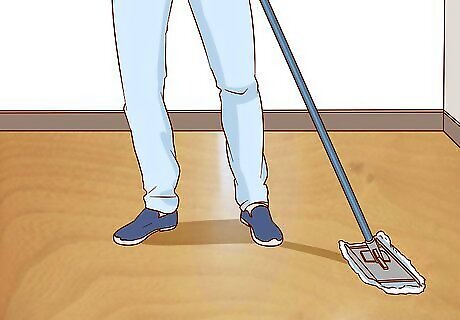
Keep the injured area dry if your dog has a splint or cast. It's important that your dog's splint or cast doesn't get wet. Avoid letting your dog run around in your backyard or the park off leash. Also, make sure you clean up any puddles or spills on your floors so your dog's splint or cast doesn't get dragged through them. If the splint or cast becomes wet, reach out to your vet. They may ask you to bring your dog in so they can replace the splint or cast.
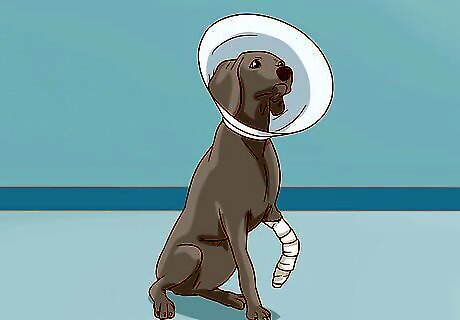
Stop your dog from licking the wound. It is important that your dog does not lick his wound. A dog's mouth is full of bacteria and licking will likely infect the wound. Talk to your vet about the different options that are available to prevent licking. There are various neck braces that prevent the dog from turning around to lick its wound. If your dog is not a chewer, a light dressing or an old sweatshirt can provide a barrier between his tongue and the wound.
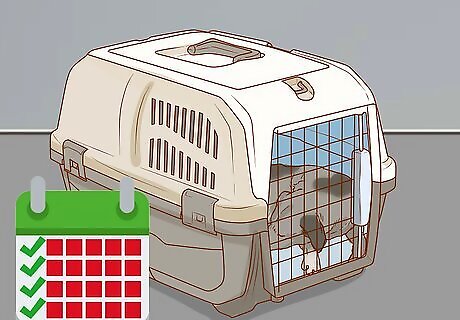
Restrict movement for the first four weeks after surgery. While your dog recovers from the broken bone, you’ll need to restrict their movement to a few five-minute walks a day, or just enough to let them eliminate outside each day. Although it is not absolutely necessary, you might want to keep your dog in a crate during this time, so you don’t have to worry about them injuring themselves when you can’t see them. Crates are widely available from pet retailers and sold for the purpose of housebreaking puppies. You don't want a crate that is overly roomy. The general rule is to use a crate that the dog can sit upright in without banging its head. After a few weeks and if your veterinarian approves it, you can start to increase physical activity. Keep your dog away from stairs and slippery surfaces. If you let the dog out of its crate, it may run around and injure itself again!

Ask your veterinarian about pain medication. If your dog is pawing at you, biting, or reluctant to move about, it could be an indication that they are in pain. There have been advances in the treatment of pain in dogs, so you should ask your veterinarian about the different options available for your dog. Your veterinarian may prescribe a pain medication, which could be a nonsteroidal anti-inflammatory drug (NSAIDs), a synthetic opioid, or an opioid. You should ask your veterinarian which medication works best and when it will make your dog’s pain go away. You should also ask about side effects of specific drugs. If NSAIDs do not work, your veterinarian may prescribe opioids.

Go for a check-up after six weeks, or earlier if your vet recommends it. Depending on what type of treatment your dog received, your vet will let you know when you need to bring your dog back in. They will do X rays to make sure the fracture is properly healing. They will also give you new recommendations for home care, such as longer, fifteen-minute walks. They may recommend hydrotherapy for your dog. Hydrotherapy is like physical therapy, but it takes place in water. The buoyancy of the water makes it easier for dogs to move their joints during recovery.
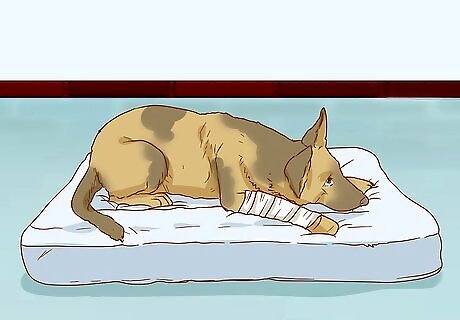
Provide memory foam bedding. Choose bedding that keeps pressure evenly spread under your dog’s weight, such as orthopedic memory foam beds. There are also some beds that have a wicking effect, which means that if your dog accidentally goes to the bathroom in the crate, the moisture will be drawn away from its skin. If the weather is cold, cover the crate with blankets at night. You may also want to give your dog a blanket.
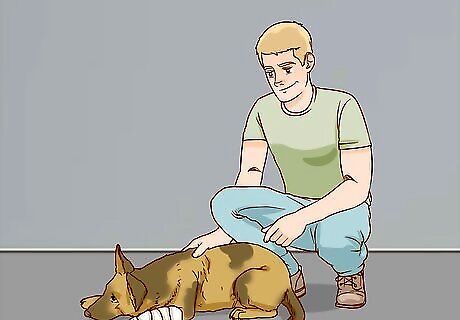
Give your dog calming attention. To relax your dog during recovery, you should be sure to give them lots of attention. Giving your dog lots of attention to ensure that your dog is calm and promotes relaxation. Caress your dog’s ears for five minutes. Pet your dog’s back to make them feel better.
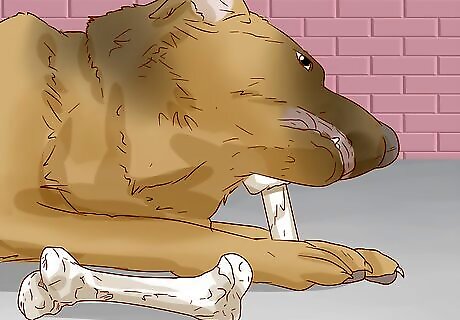
Throw your dog a bone. Since your dog will be spending lots of time indoors or in a crate during the recovery period, you’ll want to keep them stimulated with toys and loving attention. Give them a new rawhide toy or bone to chew on in their crate.















Comments
0 comment